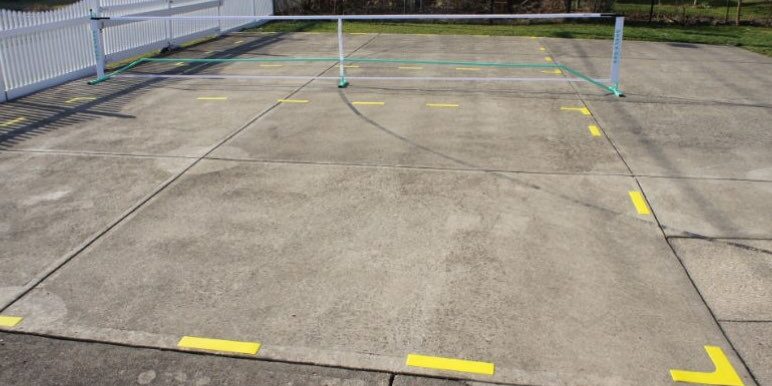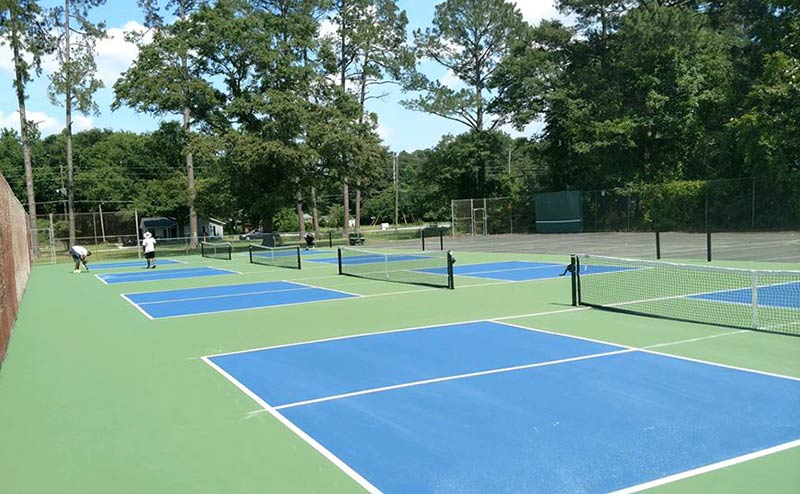Pickleball Court Construction-- Begin Building Your Perfect Court Today
Wiki Article
Lasting Practices in Pickleball Court Building You Need To Know
As the popularity of pickleball remains to rise, so as well does the requirement for sustainable methods in court building and construction. This approach not just addresses ecological problems however additionally boosts the longevity and functionality of the courts. From picking environmentally friendly materials to carrying out effective drainage and energy-saving illumination remedies, there are numerous techniques to think about. Yet, the effect of these techniques extends much beyond the court itself. Understanding just how each element adds to a more lasting future invites further exploration into the detailed balance in between entertainment growth and environmental stewardship.Selecting Eco-Friendly Materials
Choosing eco-friendly materials is a vital step in the construction of lasting pickleball courts. The selection of sustainable products not only decreases environmental effect however also improves the long life and efficiency of the court. Trick materials consist of reused rubber for the surface area, which offers exceptional sturdiness and shock absorption while diverting waste from landfills.In addition, using locally sourced materials reduces transport emissions and sustains regional economies. Pickleball court construction. Utilizing native hardwoods for fencing and seats can give a lasting aesthetic while making certain strength versus the aspects.
Including permeable materials for court structures can further contribute to sustainability by permitting for natural water drainage and decreasing overflow. These options not only safeguard regional environments however also advertise much healthier play settings.
Reliable Drainage Solutions
While the choice of environmentally friendly materials is essential, implementing efficient drain remedies is similarly essential for maintaining sustainable pickleball courts. Proper drainage not just safeguards the court surface from water damages yet likewise minimizes erosion and overflow, advertising ecological integrity.Reliable drain systems can include absorptive paving, which permits water to infiltrate the ground as opposed to merging on the surface. This reduces the probability of standing water, which can cause mold and other upkeep problems. Additionally, integrating tactically put water drainage channels and swales can guide excess water far from the court area, guaranteeing a completely dry having fun surface area and protecting against soil disintegration.
Making use of native plant life in the landscaping around the courts can better boost drain by soaking up excess water and minimizing runoff. These plants call for much less watering and advertise biodiversity, aligning with sustainable methods.
Additionally, it is critical to on a regular basis maintain the drainage system to guarantee its lasting effectiveness. This consists of clearing debris and monitoring for blockages. By focusing on effective drainage solutions, pickleball court producers can considerably add to the sustainability and durability of the facility, eventually benefiting both gamers and the environment.
Energy-Efficient Lights Options
As the demand for pickleball remains to expand, integrating energy-efficient lights options into court layout has actually ended up being increasingly vital for sustainability. Conventional lights systems usually eat excessive energy, adding to greater operational prices and environmental impact. As a result, embracing contemporary, energy-efficient modern technologies is important for both new building and constructions and renovations.LED (Light Emitting Diode) lighting stands apart as a top selection because of its long life and power savings (Pickleball court construction). Contrasted to traditional lights, LEDs use roughly 75% much less energy and can last as much as 25 times longer, substantially reducing maintenance costs. visit this web-site The directional nature of LED illumination decreases light contamination, guaranteeing that illumination is concentrated on the court rather than surrounding areas.

Sustainable Surface Alternatives
Checking out sustainable surface area choices for pickleball courts has obtained grip amongst gamers and home builders alike. The emphasis on environmentally friendly materials not just straightens with the growing environmental awareness but additionally boosts the efficiency and longevity of the courts.One popular option is making use of recycled rubber, which can be sourced from utilized tires. This material provides exceptional shock absorption, decreasing the danger of injuries go for players while promoting sustainability. Furthermore, modular tiles made from recycled plastics use an additional practical alternative. These ceramic tiles are very easy to replace and set up, and their convenience permits various court configurations.
Natural grass courts are additionally becoming a lasting selection, advertising biodiversity and minimizing the warm island impact. Nonetheless, they require regular maintenance and water, which might not align with all sustainability goals.

Water Conservation Strategies

One more reliable method entails the installation of rain harvesting systems. These systems save and collect rainwater for use in preserving court surfaces and landscape design. This technique not only preserves drinkable water however likewise lowers dependence on municipal resources.
Moreover, employing drought-resistant landscaping around the courts is necessary. Indigenous plants call for much less water try this out and are better adapted to neighborhood climate conditions, therefore lowering total water intake. Additionally, utilizing efficient watering systems, such as drip watering, guarantees that water is provided directly to plant roots, lessening evaporation and waste.
Conclusion
Integrating sustainable techniques in pickleball court construction dramatically contributes to environmental conservation and source efficiency. By focusing on these techniques, the building and construction of pickleball courts can align with more comprehensive environmental objectives while advertising longevity and performance within areas.As the popularity of pickleball continues to increase, so too does the requirement for lasting methods in court building and construction.Choosing environment-friendly products is a critical step in the building and construction of sustainable pickleball courts. By prioritizing energy-efficient illumination options, pickleball court erectors can contribute to a much more sustainable future while meeting the needs of stakeholders and players alike.Integrating lasting surface area options not only enhances the efficiency of pickleball courts but likewise paves the means for carrying out reliable water preservation methods.Incorporating sustainable techniques in pickleball court construction considerably contributes to environmental conservation and resource performance.
Report this wiki page